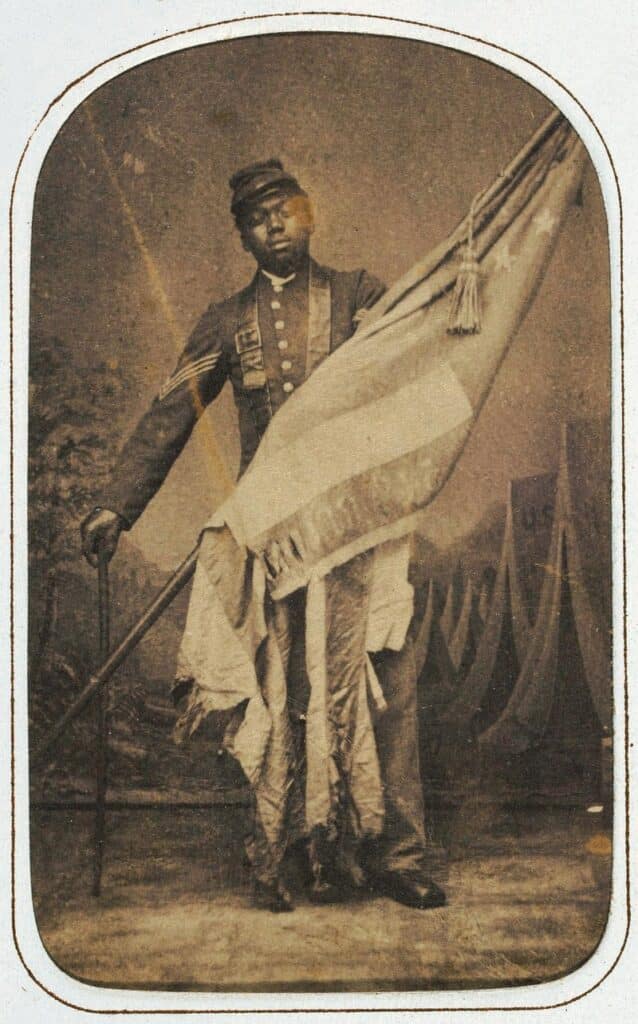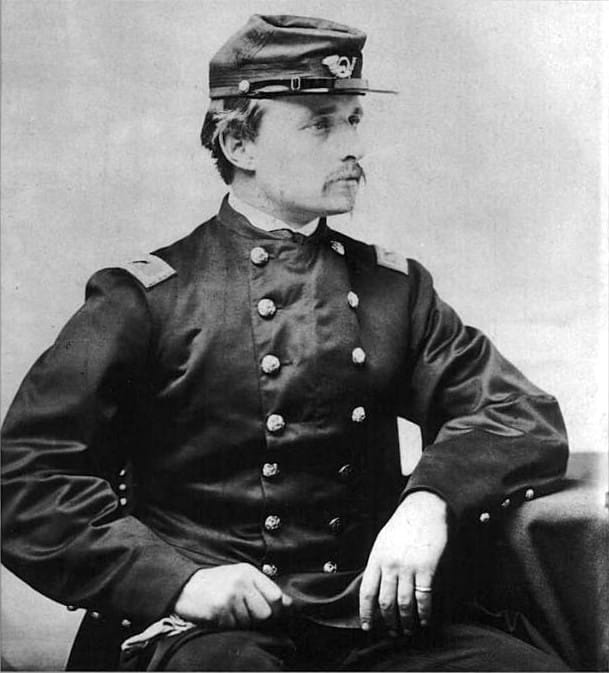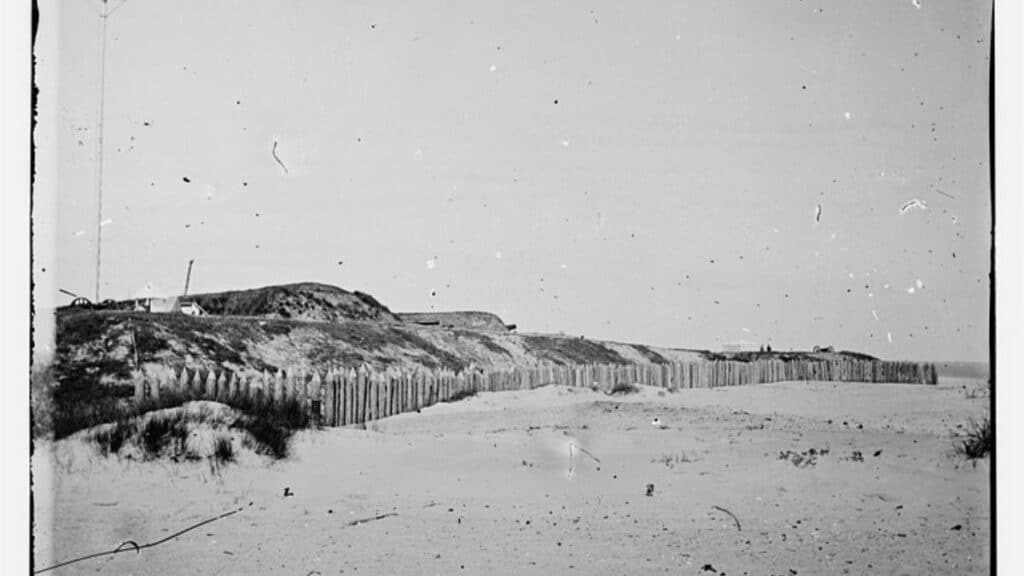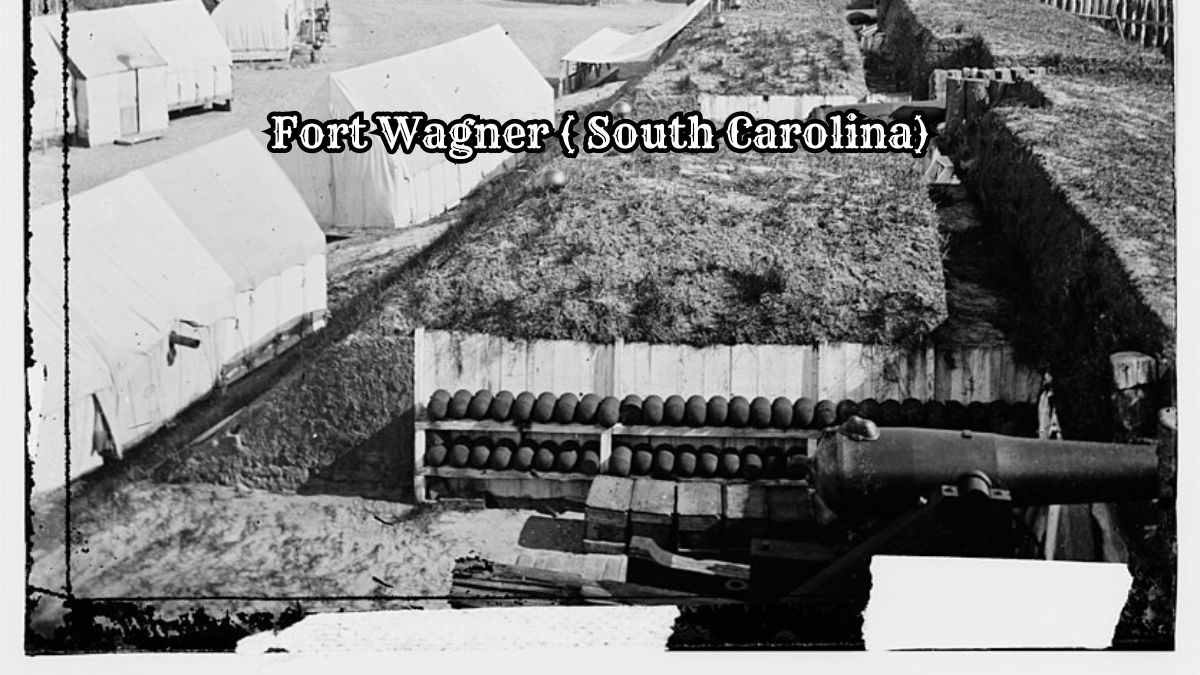Fort Wagner, nestled on Morris Island in South Carolina, is pivotal in the Civil War story. The Battle of Fort Wagner was fought in 1863.
It was a significant event featuring the brave 54th Massachusetts Infantry Regiment. They were one of the first African American units in the United States Army.
Their courageous assault against entrenched Confederate forces captured national attention and spurred further enlistment of African American troops.
The site itself was a strategic Confederate stronghold, designed to protect the southern port of Charleston.
Despite the Union’s repeated attempts to seize the fort, Fort Wagner remained a symbol of Confederate resilience until its eventual evacuation.
Today, this historic landmark provides valuable insight into the Civil War era’s military strategies and social dynamics.
History of Fort Wagner (South Carolina)

Fort Wagner’s significance is deeply intertwined with several key aspects of the American Civil War.
The events in Charleston, one of the most critical ports, and the strategic fortifications in Charleston Harbor are crucial to understanding this chapter of history.
The American Civil War
The American Civil War began in 1861 when Southern states seceded from the Union.
Fort Sumter in Charleston Harbor marked one of the war’s first major conflicts. South Carolina, the first state to secede, played a prominent role in the Confederacy.
The Siege of Charleston was a significant military campaign aimed at controlling this vital port.
Charleston: A Strategic Port
Charleston served as a critical Confederate port, vital for supplies and trade. Its capture was a major objective for Union forces, and blockades were established to cut off supplies.
The city’s location made it a key strategic point for the Confederate and Union armies. Control over Charleston meant dominance over a major entry point for resources and reinforcements.
Fortifications in Charleston Harbor
Charleston Harbor was fortified to defend against Union attacks. Fort Wagner was one of several fortifications aimed at protecting the harbor.
It gained fame during the Siege of Charleston, particularly for the Battle of Fort Wagner. These fortifications, including Fort Sumter, were engineered to withstand heavy bombardment and were crucial in the city’s defense strategy.
Fort Wagner’s Strategic Importance

Fort Wagner was critical in the Civil War due to its prime location and formidable defenses, which played key roles in military strategy and operations.
Location and Structure
Fort Wagner stood on Morris Island, guarding the southern approach to Charleston Harbor. The fort spanned 630 yards, and its walls were made of sand and earth, bolstered by palmetto logs.
This design made it resilient against artillery bombardment.
Positioned near the Atlantic Ocean, it commanded key waterways. This placement was vital as it allowed control over naval movements critical for defending Charleston, one of the main Confederate ports.
Military Significance
Fort Wagner’s importance stemmed from its ability to protect Charleston from Union forces. Confederate soldiers manned the fort to deter Union advances.
Its strong defenses included heavy artillery, which played significant roles in multiple battles.
Union soldiers aimed to capture Fort Wagner to cut supplies to Charleston and gain a strategic foothold.
The Fort’s location on Morris Island made it a battleground for control between the Union and Confederate armies, influencing the broader campaign in the southern theater of the Civil War.
Key Battles

Fort Wagner, located on Morris Island, South Carolina, was the site of two significant battles during the American Civil War. These battles involved notable artillery use, high casualties, and intense hand-to-hand combat.
The First Battle of Fort Wagner
The First Battle of Fort Wagner occurred on July 10 and 11, 1863. Union troops, led by Brigadier General Quincy Gillmore, launched an assault on the fort.
They aimed to seize control to advance towards the strategic port of Charleston.
The Union forces utilized heavy artillery bombardment aiming to weaken the Confederate defenses. Despite their extensive preparations, the Confederate troops successfully repelled the attack.
The Union suffered approximately 339 casualties, while Confederate casualties were significantly lower due to their strong defensive positions.
The Second Battle of Fort Wagner
The Second Battle of Fort Wagner took place on July 18, 1863. This battle is particularly notable for the participation of the 54th Massachusetts Infantry, one of the first African American regiments in the Union Army.
Colonel Robert Gould Shaw led the Union troops to launch a frontal assault on the fort. The fighting was intense, particularly involving close-quarters, hand-to-hand combat.
Unfortunately, the Union forces were unable to capture the fort, suffering heavy losses—about 1,515 casualties. Confederate casualties remained substantially lower.
Despite the defeat, the 54th Massachusetts’s bravery garnered widespread respect and marked a significant moment in the history of African-American military service.
54th Massachusetts Infantry
The 54th Massachusetts Infantry played a significant role in the fight against slavery and demonstrated remarkable bravery during the Civil War.
Their legacy includes notable contributions and leadership under Colonel Robert Gould Shaw.
Formation and Contribution

The 54th Massachusetts was among the first African American regiments formed during the Civil War. Governor John A. Andrew of Massachusetts authorized its creation in January 1863.
Composed primarily of free African Americans from northern states, they trained at Camp Meigs in Readville, Massachusetts.
The regiment’s most famous engagement occurred during the assault on Fort Wagner on July 18, 1863. Despite facing heavy casualties, their bravery proved the valor and fortitude of Black soldiers.
This battle brought attention to the contributions of African American troops and bolstered support for their inclusion in the Union Army.
Key Figures:
- Sergeant William Carney earned the Medal of Honor for his actions at Fort Wagner.
- Their bravery inspired the film “Glory,” highlighting their significant role in history.
Colonel Robert Gould Shaw

Colonel Robert Gould Shaw was appointed to lead the 54th Massachusetts Infantry. Born into an abolitionist family, Shaw was committed to ending slavery. His leadership was instrumental in the regiment’s training and battle readiness.
Shaw led his men in the assault on Fort Wagner, where he was killed in action.
His death and the gallantry of his soldiers became a rallying cry for the abolitionist movement. Shaw’s dedication and sacrifice made him a symbol of the struggle for equality and justice.
Legacy:
- Shaw’s leadership and the courage of the 54th continue to be honored and remembered.
- Monuments and memorials commemorate their service and sacrifice, including the Robert Gould Shaw Memorial in Boston.
The Siege and Aftermath

During the prolonged siege, the Union Army faced numerous obstacles as it attempted to capture Fort Wagner, which resulted in significant changes to military operations and the course of the war.
Long-Term Operations
The Union Army, under Brigadier General Quincy Gillmore, initiated a series of offensive maneuvers to seize Fort Wagner. These operations included repeated assaults and persistent artillery bombardments.
Union shelling intensified over weeks, heavily damaging Confederate defenses.
Naval presence also played a crucial role, coordinating with ground troops to blockade supply lines and weaken the fort’s resilience.
Despite the protracted efforts, the Confederate forces repelled initial attacks, showcasing their strong defensive strategies.
Union Victory and the Fall of Fort Wagner
Consistent Union shelling eventually wore down the Confederate defenses. Although the Union Army faced considerable resistance, strategic persistence paid off.
The eventual fall of Fort Wagner on September 7, 1863, marked a pivotal Union victory.
Confederate troops evacuated the fort due to untenable positions and supply shortages.
This victory allowed the Union forces to gain control over a strategic point, significantly impacting Confederate operations in the region.
The capture of Fort Wagner demonstrated the effectiveness of sustained military pressure and coordinated assaults.
Explore More: 10 Historic Forts in South Carolina
Fort Wagner’s Legacy
Fort Wagner has had a lasting impact due to its significant role in the American Civil War and its efforts in modern-day preservation.
The fort remains a symbol of bravery, especially highlighting the contributions of the 54th Massachusetts Colored Infantry Regiment.
Cultural Impact
Fort Wagner is best known for the 1863 assault by the 54th Massachusetts Colored Infantry Regiment. This battle was one of the first major engagements where African American troops played a lead role.
Their bravery garnered significant attention and helped pave the way for broader acceptance and recruitment of African American soldiers in the Union army.
The fort’s legacy also includes its portrayal in various cultural works, such as the film Glory, which emphasizes the heroism of the 54th Regiment.
These portrayals continue to educate the public and honor the sacrifices made by these soldiers.
Civil War Trust and Preservation
Organizations like the Civil War Trust have led efforts to preserve Fort Wagner. However, much of the original fort has been lost to the sea. Ongoing preservation initiatives aim to protect and memorialize the area.
The Civil War Trust works tirelessly to ensure that future generations can learn about this pivotal site.
These projects include historical markers and educational programs that highlight the importance of Fort Wagner in American history.
Preservation endeavors honor those who fought and serve as valuable educational resources, keeping Fort Wagner’s legacy alive for years to come.

Cory is a website owner and content creator who enjoys fishing, history, coin collecting, and sports, among other hobbies. He is a husband and father of four.
Romans 15:4 For whatever was written in former days was written for our instruction, that through endurance and through the encouragement of the Scriptures we might have hope.

